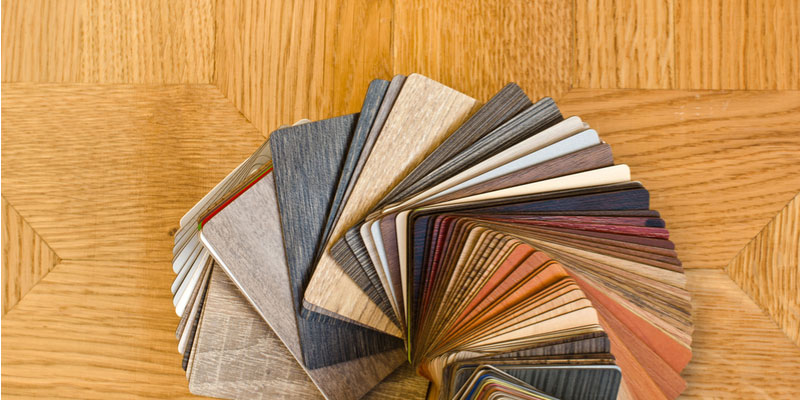When creating your dream kitchen – whether in new construction or remodeling your existing space – choosing your perfect kitchen floor can be a challenge. There are a number of factors to consider, from durability to longevity, from the size of your space to how much cook, and the list goes on. To help you make the ideal decision for your new kitchen, here are the four most popular kitchen floors and how they perform in the kitchen.
Vinyl Flooring
The ideal flooring for those with tight budget who cook a great deal and don’t want a lot of maintenance, but still want style. Yes vinyl can do all of that and more. Vinyl flooring, or more appropriately sheet vinyl, is a very resilient product – stain proof and water proof. It is soft and cushy meaning kitchen wares won’t break easily when dropped and feet won’t hurt if you spend lots of time in the kitchen meal prepping for the family.
Sheet vinyl requires little maintenance, only sweeping and mopping are required. Another positive for sheet vinyl is the multitude of colors and patterns available from which to choose. The patterns, textures, and colors of vinyl can give you the look of stone and tile without the higher cost. On the downside, vinyl is super slippery when wet, and the upper layer which is resistant to scratches, scuffing, and other damage will wear off in time. In addition, if your kitchen is large, be prepared for seams which can allow moisture and dirt in, as standard vinyl is only 12’ wide.
Hardwood Flooring
Hardwood Flooring is a popular kitchen option, ideal for open floor plans, longevity and durability. It never goes out of style and offers a warmth unmatched in other flooring. Because of its timeless appeal, hardwood flooring is a great investment should you ever chose to sell your home. Hardwood flooring is low maintenance and moisture resistance (when finished properly) and can last for years and years. When choosing between solid or engineered wood planks, engineered woods tends to be the better option for kitchens because it is resistant to changes in the temperature and humidity common to your kitchen. Either option is costlier than vinyl flooring, but also offers a longer life for your kitchen.
Porcelain Tile
Offering the appearance of stone, porcelain tile is resilient, durable and requires little maintenance. Possibly the most durable option for flooring, porcelain tile resists stains because it is virtually unaffected by moisture. It can even be used for outdoor kitchens in nearly all climates. Porcelain comes both glazed and unglazed, with glazed porcelain tiles offering up greater color options as well as a variety of textures which can even mimic real stone (and cost less). The unglazed variety are equally beautiful and strong, but are limited to natural earth tones. For flooring options, the porcelain tile you choose should be certified slip resistant (Americans with Disabilities Act) for your safety.
Cork Flooring
Cork flooring is growing in popularity as an eco-friendly option, which promises comfort and slip resistance naturally. As a sustainable material, cork harvesting is regulated to ensure its future availability. Cork is naturally unique providing moisture resistance while offering a distinctive natural design displaying its grain in one of a kind swirls and stippling. The downside of cork flooring is that it requires re-sealing periodically (every three to four years) to keep moisture from seeping into the tile seams and to protect against scratches, scrapes, and cuts.

